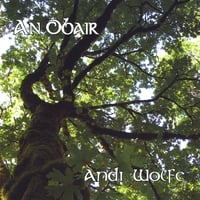Mr. Willem Hanekom from Citrusdal found a population of a new species of Hyobanche several years ago. He took me to the site in 2001 and I wanted to go revisit the population to do the host root sampling and to check the status of the plant. We drove up to Citrusdal on Wednesday and Mr. Hanekom took us out to the site and to another one to collect Hyobanche atropurpurea. He had warned me that the first site had burned last year and that he hadn't seen the new species there this year. I still wanted to go and have a look, so we did check out the site pretty thoroughly.
 The first site visited was just beyond the area where the new species was found. Mr. Hanekom had seen Hyobanche atropurpurea here last year. It took a bit of looking before we found some inflorescences, but these were certainly usable. This is a new population to my survey, which was also a plus.
The first site visited was just beyond the area where the new species was found. Mr. Hanekom had seen Hyobanche atropurpurea here last year. It took a bit of looking before we found some inflorescences, but these were certainly usable. This is a new population to my survey, which was also a plus.That dark blob in the center of the picture is an inflorescence of Hyobanche atropurpurea. The flowers are so dark purple that they appear to be black.

Here's a closer look at the inflorescence. This one is in pretty good shape. I think this species may be rodent pollinated, but that idea will have to be tested when I have a lot more time to spend in the field. I really need to arrange a sabbatical here that would cover the entire flowering season for Hyobanche.

As usual, I excavated the rhizome system so I could collect host roots attached to the haustoria along the stem.

There has to be some good root tissue stuck to the parasite somewhere in this mess.

Yep, got some big, fat, juicy ones that will yield a lot of DNA for the study.

Here's another clump that was a bit past its prime.

I used a shovel to pop out a plug of turf so I could take my time in removing the soil around the rhizome.

I gauged the depth of that plug pretty well, since this is what was exposed on the bottom side.

This rhizome yielded some excellent host root samples.

Ants were also associated with this collection. That gray blob in the lower left corner is an ant nest building, which probably started in the old inflorescence of Hyobanche.
 This is the second site we visited on Wednesday, which is where a new species of Hyobanche occurs. We spent a lot of time scouring this farm for any signs of the plant, but it's not up this year at all. Mr. Hanekom will monitor the site over the next few years and let me know when he sees the Hyobanches reappear.
This is the second site we visited on Wednesday, which is where a new species of Hyobanche occurs. We spent a lot of time scouring this farm for any signs of the plant, but it's not up this year at all. Mr. Hanekom will monitor the site over the next few years and let me know when he sees the Hyobanches reappear.It's a little scary to think that this new species has only been found on this one site and that a fire may have wiped out the population. I think the plant is still there, but won't flower again for awhile.

Here's Mr. Hanekom looking around the site. He walks the veldt pretty regularly and is very fit! He also knows the flora of this region like the back of his hand.
 After dropping Mr. Hanekom back at his home in Citrusdal, Esprit and I drove toward Ceres on R303. Part of this trip was driven on gravel roads, but most of the road has been upgraded now to a nice paved highway.
After dropping Mr. Hanekom back at his home in Citrusdal, Esprit and I drove toward Ceres on R303. Part of this trip was driven on gravel roads, but most of the road has been upgraded now to a nice paved highway.Ceres is known for its fruit production and we saw plenty of citrus groves along the road. The next stop was at the bottom of Gydo Pass where I had previously collected Hyobanche sanguinea.

Hyobanche sanguinea was in full bloom here. This form looks a lot different than the west coast form, but there isn't much difference at the DNA level. The differences are in color, and the shape of the corolla mouth. I'm not sure as of yet how I'll treat these differences in my revision of the genus.

The soil here is derived from shale and there are a lot of stones that make digging with a shovel or trowel impossible.

Time for the pickaxe! It's the only tool I've found that can handle this type of soil, and it's a lot of effort!

The trowel is useful for wedging out the loosened stones. It's pretty tough going to excavate without damaging the rhizome of the Hyobanche I want to sample.

I have to alternate between the pickaxe and the trowel to get down to the zone where the host roots are attached.

It's such a cool plant! The flowers are very fleshy and full of nectar. They're probably pollinated by birds, but I haven't done that study as of yet.

This one was on the road cut, and it had it's own special challenges for excavating. I found some muscles that haven't been used for awhile. Ouch!

Hmmm, something big is in the way. Let me think about this for a second.

That huge stone on the right side of the picture was a bit challenging to remove. Once it was out of the way, I could see all the roots attached to the parasite.

And, better yet, I was able to find a host plant physically attached to the parasite. I can definitely say that Bromus is a host plant of Hyobanche. I wonder what else is being parasitized? The DNA survey will give me the answers.











No comments:
Post a Comment